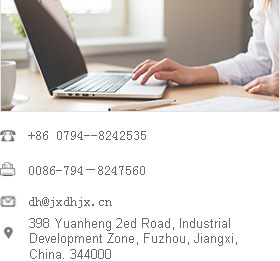
- DHP419 Series of PP Yarn Stretching Machine
- DH419D Series PP FDY Multifilament Spinning Machine HT
- DHP418 Series PP FDY Multifilament Spinning Machine MT
- DHKV 1235-12 Polyester POY Spinning Line
- DHPE Ultra High Molecular Weight Polyethylene Yarn Spinning Equipment
- DHTA Aramid 1414 Yarn Spinning Line


"Generally speaking, when the fabric is wet with water, the air permeability will become worse. Look at this cloth, the air permeability will be stronger after wet water." Wang Dong, a professor at Wuhan Textile University and a smart textile designer, recently worked in his work. Shi said when he showed a smart textile fabric to a reporter from Science and Technology Daily. Wang Dong's studio is like a textile "treasure hole": a smart seat cushion can sense and display pressure, a pair of smart insoles can sense and record walking data, and a smart T-shirt can judge and adjust the wearing comfort by itself.
When we are entangled with the advantages and disadvantages of cotton, chemical fiber, and silk clothing, smart textiles have quietly left the laboratory and "mixed" into our lives.
The most "understand" your cloth
"The concept of smart textiles was first proposed in the late 1970s, and its meaning was relatively broad and unclear. It was not gradually recognized until the late 1990s." Wang Dong said that smart textiles usually refer to the integration of textile, electronics, information, A new type of textile that can sense changes in human or environmental signals and respond actively through feedback mechanisms while retaining the inherent style and technical characteristics of traditional textiles.
From ancient times to the present, fabrics have ranged from leaves, cotton, silk to chemical fibers, and textiles have also expanded from single clothing to non-woven daily necessities and industrial materials. The evolution of textiles also reflects the progress of human civilization and technology.
According to Wang Dong, smart textiles have the characteristics of multi-disciplinary cross-industry, and their cross-industry applications are very extensive. The difference in each index will lead to completely different product performance.
As people have more and more functional demands for the comfort of wearing products, the development of smart textiles has ushered in opportunities and challenges.
"The raw materials have changed, and the product design has to keep up." Wang Dong said that an intelligent textile product often contains a set of intelligent systems with multi-disciplinary applications. He and his team designed a sports T-shirt that can detect, analyze and monitor heat and mass transfer to maintain user comfort in real time.
The state of smart textiles can be adjusted on the fly. During exercise, the pores of this type of clothing fabric can automatically expand according to changes in the body's heat to help the body sweat quickly. When the body temperature is appropriate, the pores will automatically close. At the same time, it can also capture the physical characteristics of the human body during exercise, record data such as heart rate and blood oxygen saturation, and transmit it to the terminal.
Technology and art "hold hands" on the cloth
The application of smart textiles will bring us a completely different beautiful life.
"At present, smart textiles have been involved in the fields of health monitoring, personal protection, transportation energy, entertainment and music." Wang Dong said that such products have played a key role in some daily lives.
He introduced that an emotional experience shirt designed by a foreign company uses digital printing technology to embed sensors in the shirt with a streamlined texture design to capture the intensity, duration and position of touch and reproduce the feeling of hugging. Connect the mobile app and the shirt through Bluetooth, record the relevant parameters of the hug, and transmit it to the distant relatives and friends who also own the product, so as to simulate the hug touch.
The classification of smart textiles is generally classified by the way they respond to external stimuli, and is roughly divided into "passive" smart textiles and "active" smart textiles. The former, such as shape memory materials, hydrophobic or hydrophilic textiles, etc., can change their properties after being stimulated by the environment; the latter refers to textiles equipped with sensors and actuators that can convert internal parameters into transmitted information.
"Intelligent textiles are a combination of technology and art." In Wang Dong's view, smart textile designers must understand disciplines such as materials, electronics, and industrial design. Intelligence is the embodiment of individuality. Designers need to design different products according to the characteristics of textiles. to meet differentiated needs.
Smart textiles are not an ordinary piece of fabric, and good products cannot be designed with scissors and measuring rulers alone. Wang Dong believes that by implanting scientific connotations in art and expressing science and art, such smart textiles are more easily accepted.







